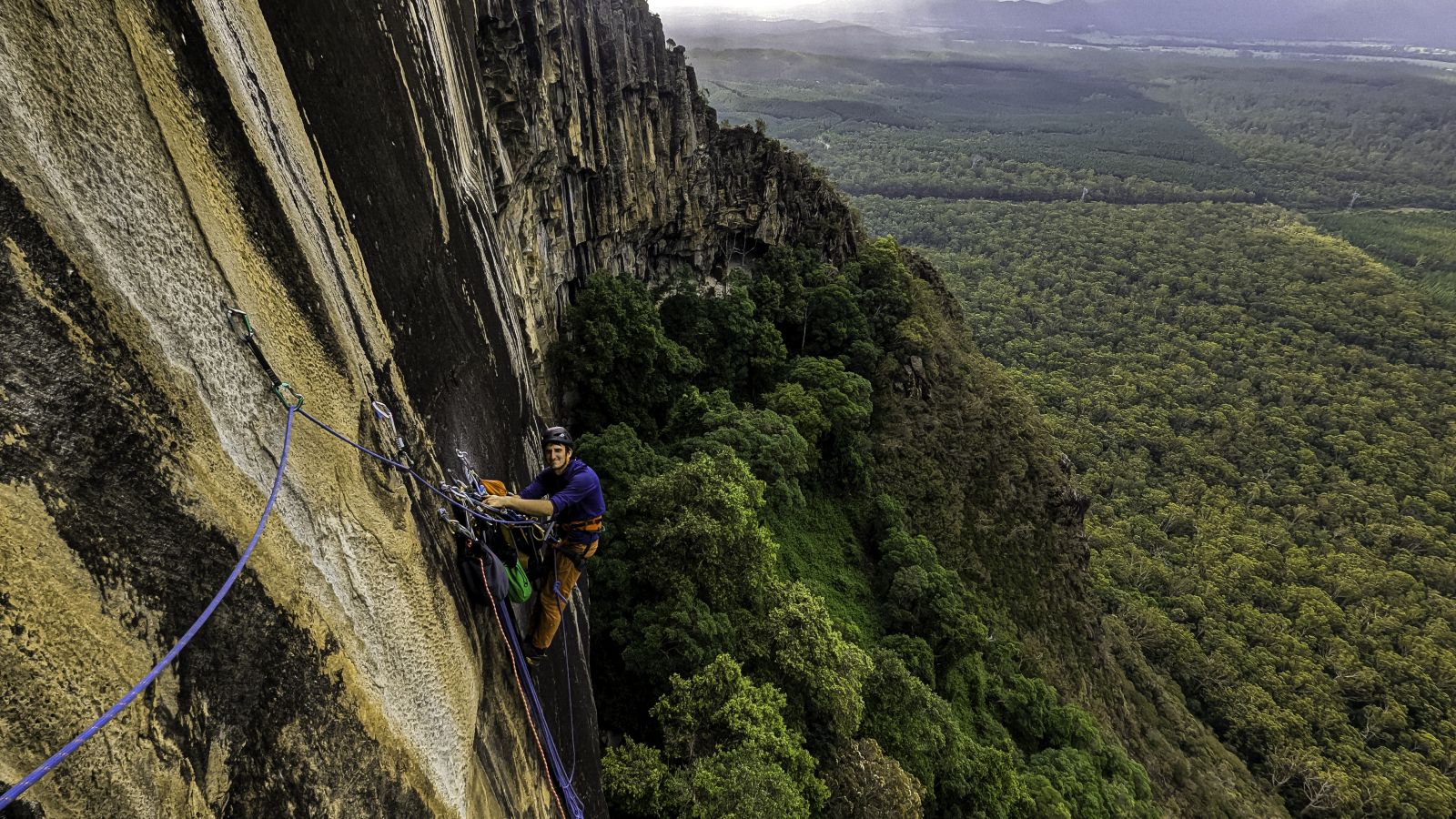
Written by Pinnacle Ambassador Kyle Addy
Australia isn’t renowned for it’s big wall climbing, those who pursue this niche usually do so at Victoria’s, Mt Buffalo. The 300m granite North wall hosts many iconic routes such as Ozymandias M4, Lord Gumtree M7 and Copperhead Road M9. The Glasshouse Mountains of Queensland, however, are not where one might look for such routes. The Sunny Coast is a picturesque setting, of sandy-golden beaches, pine forests and a collection of jagged peaks that hold many quality climbing routes. The tallest peak is Mt Beerwah. The summit overhangs are dubbed the Organ Pipes, they are indeed beautiful, but they are a far cry from the big wall aid routes found in Yosemite. As the saying goes. “We measure our climbs in meters, they measure their climbs in pitches.”
Cuddles is situated at the left-hand end of the overhangs and reaches around 90m. It follows unlikely cracks and incipient seams through roofs and corners. Not the stuff of legend but unique, nonetheless. Looking to expand my Aiding resume, I’d been eyeing this route for a number of years as had Alex Mougenot. I couldn’t think of a better partner for this mission, although he was the only other person that wanted to do it. With fair conditions for forecast for Australia Day Weekend, the goal appeared to be the right time and the right challenge for us.
.jpg)
A sizable organisational effort soon followed to gather the gear we needed. After talking with previous ascensionists and reading trip reports several themes emerged, “Fucking full on” “That’s awesome you guys are doing it….fuck that though!” Reports of multi day ascents, Pitch lends longer than a standard business day and retreating injured party after blowing a bat hook hole. We were urged to be careful.
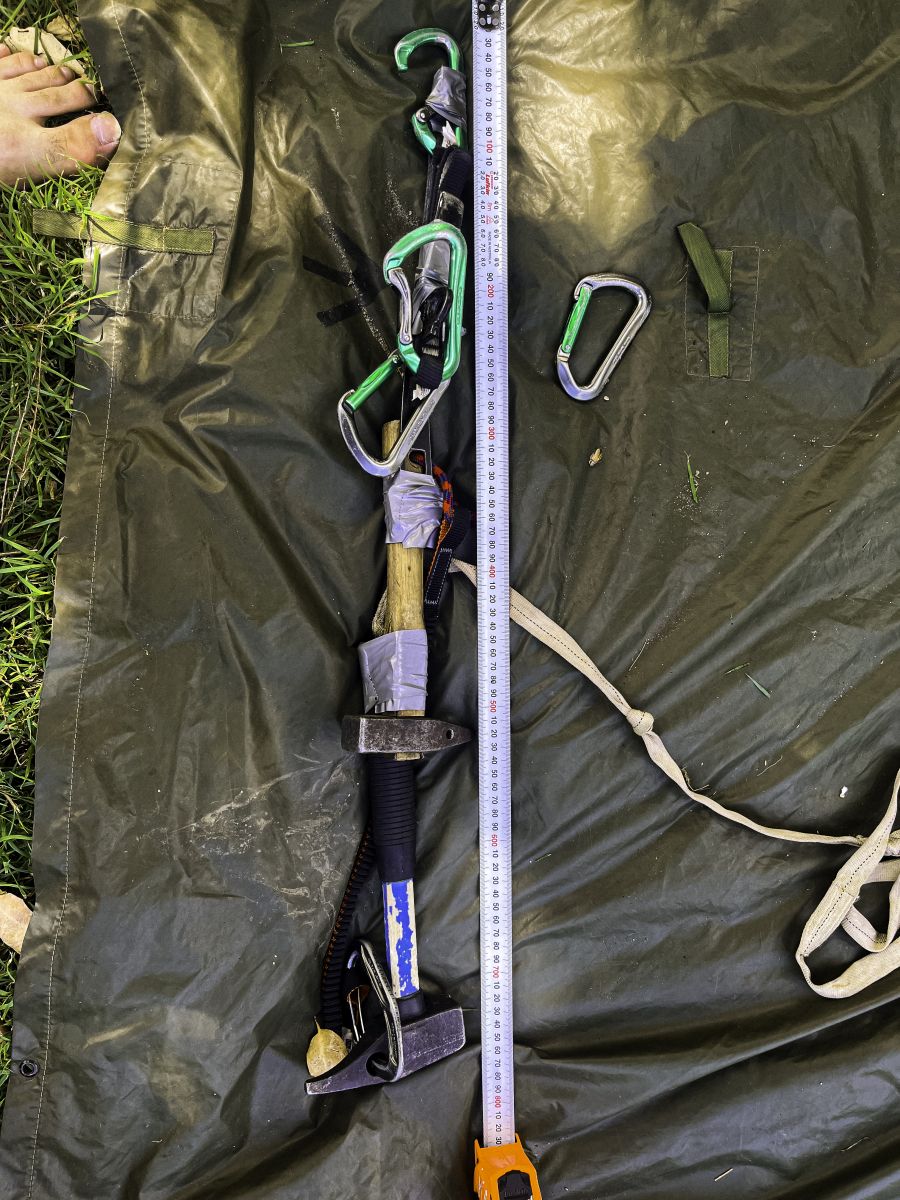
0600: We left the carpark and soon approached the Beerwah slabs, the air was still and humid. Hikers were stunned at the volume of our gear, “Are you going abseiling?” Sweaty and motivated, we arrived at the base of our objective. Racked up and ready for battle armed with the oldest tools of known to man, the hammer and wedge. “Care for a spot of whack and dangle ol’boy”?
0730: Pitch 1 A2, Kaddy’s lead: After a few brief free moves to a stud, the climbing lead straight into thought provoking nailing. “Seems good enough”. Some experimenting with a cam hook showed the tensioning force crumbled the soft rock, a tied off Z piton seemed to compress the rock rather than crumble it. Aiding is a nebulous and technical facet of climbing I find interesting and satisfying. Being a carpenter by trade, swinging a hammer came naturally as did finding a placement that fit, much like a toddler learning a square block fits into a square hole. A shallow diagonal weakness appeared to the right, sawn off angle, stacked and tied off angles. This connected to a steep crack that led awkwardly through a roof. Tied off pin, easy hook move and long reach to gain final pin at the belay.
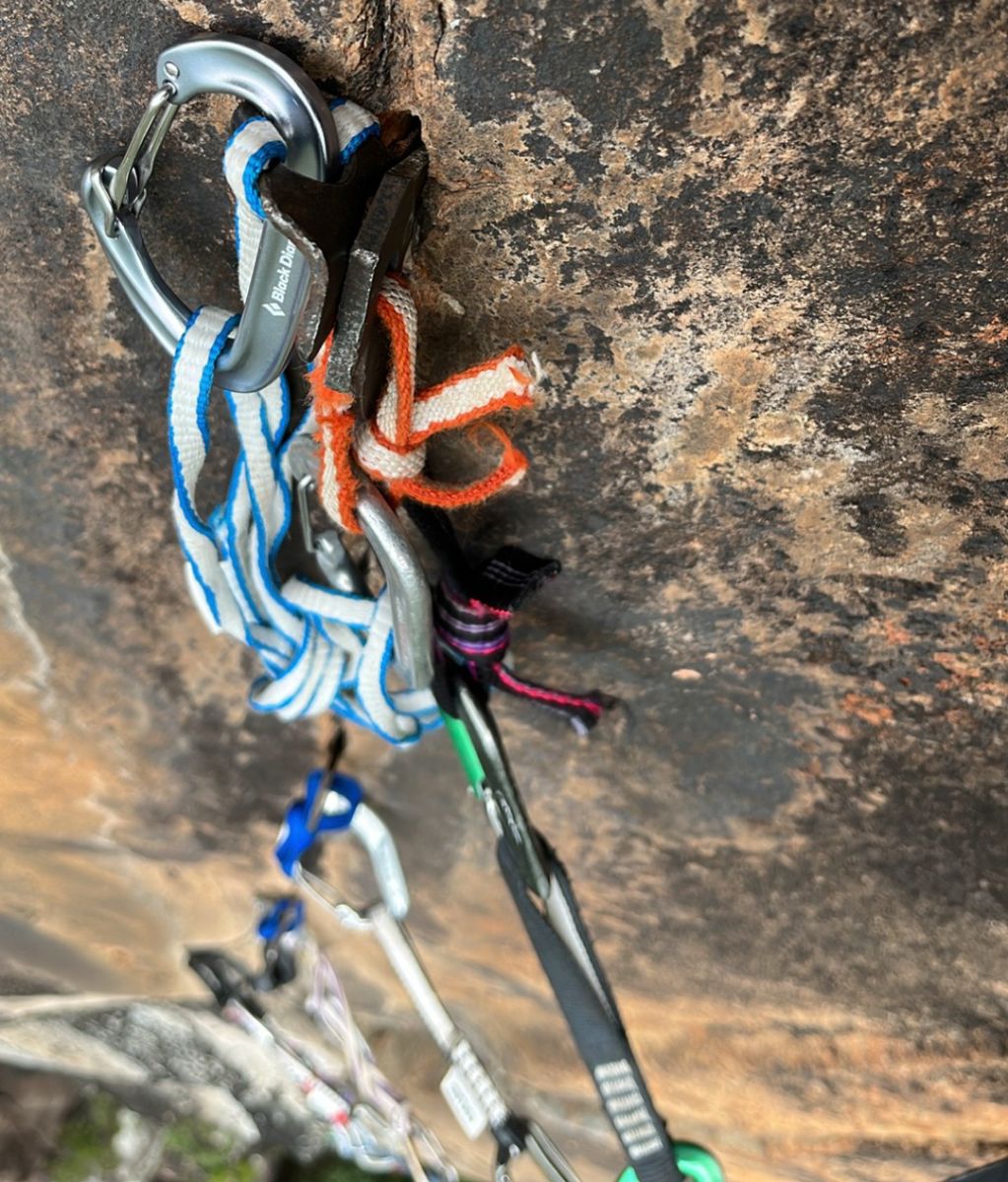
0930: Pitch 2 A1+, Moogi’s lead: A good warm up for what was to come, fixed gear up to and out on pegs around a small rootlet. Perched with my back in the corner I nodded off a few times on belay (rope tied off). Higher up, a clean finger/hand that would make a good free pitch that narrowed back to more beaks to the belay.
1230: Pitch 3 A3, Kaddy's lead: This was the crux pitch, it looked fused but with height, placements presented themselves. Beak, angle stake in a flared horizontal, another beak. As I broke through past a rootlet, I slipped a foot and swung left, knocking off a rock that luckily missed Alex and hit our haul pack. The going now was slow and careful. Nailing is engaging to the senses, hearing the pin tightening into place or a beak settling in position as you weigh it. Your helmet being the shield between your eyes and a pointy piece of steel. Watching now to see it move and flex, you might even smell the metal on rock. This process of evaluation is what aid climbing is all about, the contemplation shopping around for the next best placement. This time a dull flexing rusty knife blade, not a vibe. A few more meters and I was stalled, a flared blow out shallow hole, like a 3-sided square with no top or front and about the size of thumb nail. I eventually managed a sawn-off angle hammered downwards, I watched it torque and flex as I bounced in the ladder. For those unfamiliar with this process, I would liken it to throwing poo at a wall and seeing what sticks. In my case it was a wet, runny poo and after a more rigorous test, the pin ejected from the crack. A body length or so higher I spied a fixed hanger, so close yet so far. Nearly in my top steps I was still nowhere near it, I needed something. In my desperation with a roll of duct tape, two hammers, a nut tool, two quick draws and a lost arrow. I engineered a stick clip 750mm long. Even at full reach, so close, extend the fingers, Salvation! Relieved, I began breaching the roof and I prayed for easier terrain. It wasn’t, I peeked around the lip and saw the rock as featureless as a concrete slab with a knife thin seam. Tied off lost arrow to pull the lip, then a sawn-off angle, I could see the whole length in the crack. Things were looking pretty dire, Alex yelled that I should find a bat hook somewhere, found it. An 8mm hole just for the tip a sky hook. On a slightly overhanging wall, as you get higher the base of the hook pulls off the wall!!! This inspired about as much confidence as riding a skateboard made of C4. On to the next problem, a deep but flaring hole but I’d run out of pins that size. I resorted to back-to-back LA stack and tied off with a screamer, bomber. Another bat hook then 5 consecutive #2 and #3 beaks. The first line in Pete Zabrooks book, “Test the shit out of it and call it good.” Feeling very much alive, I arrived safely at the anchor.
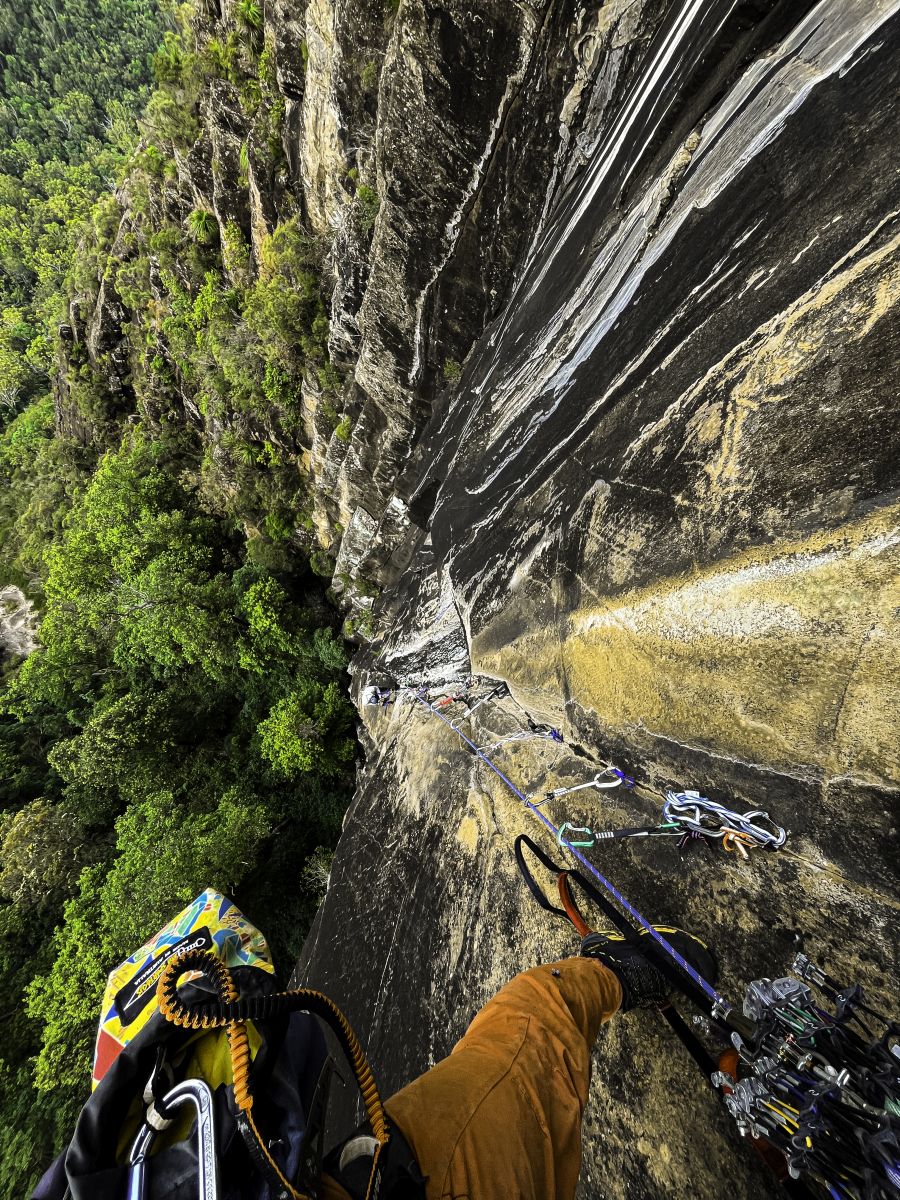
1630: Pitch 4 A2+, Moogi’s lead: #1 beak past a carrot and bat hook lead towards an awkward roof. After a long reach to a carrot with wires looped together, Alex had passed the roof. The corner above offered classic aiding. Beaks and pins at intermittent distances. The sun began to set, the orange contrasted against the black and white streaked overhangs. I played music to improve the morale, eventually out of the darkness, the line was fixed and began to jug and clean. “This was a waste of time! We could have gone to a bar! We could have had a cocktail, we could have had a coffee!”
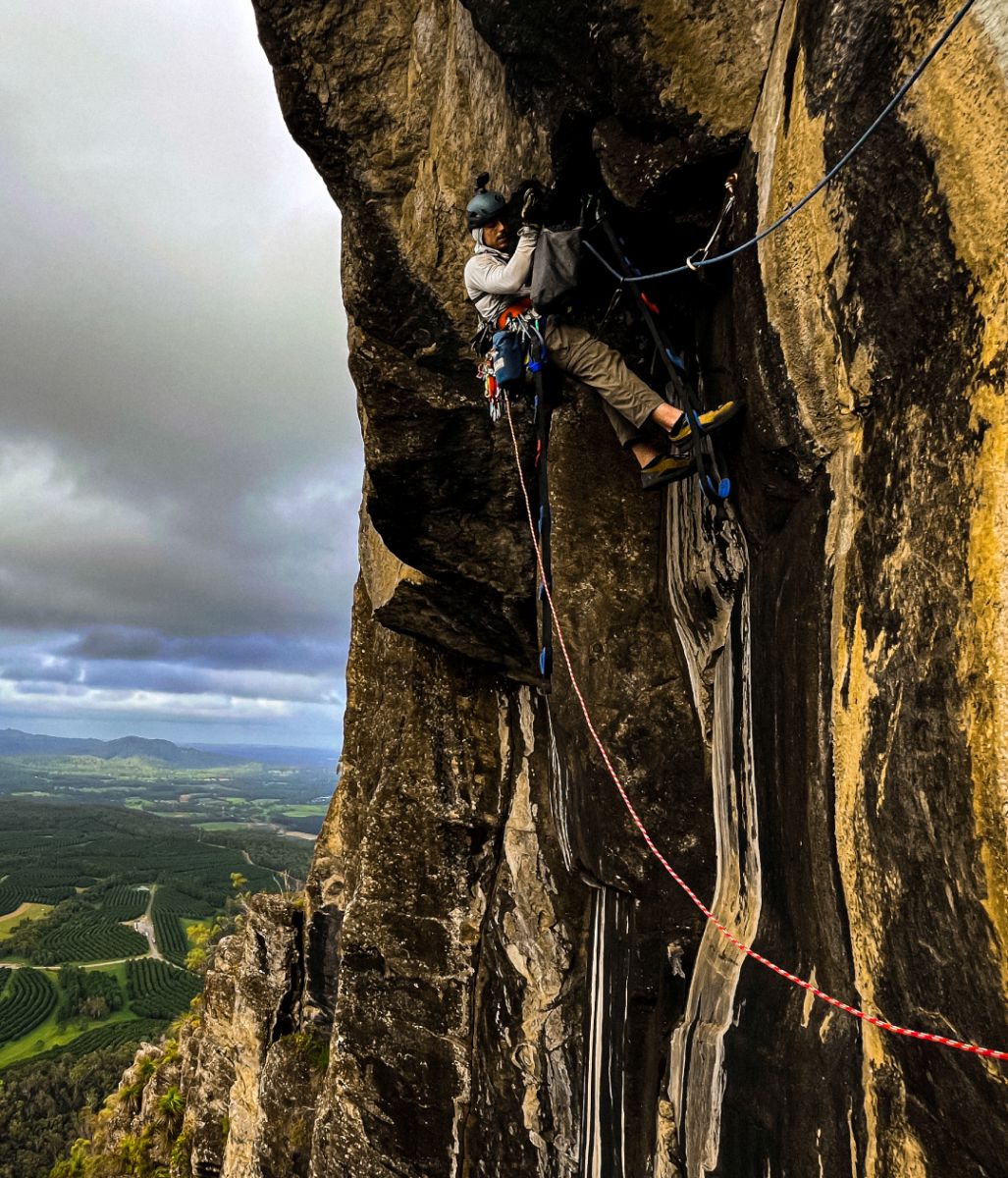
2100: We both stood at the top, Cumbre! A quick roped scrambled lead us below the summit and we began stumbling down the tourist track. “You know that guy with the donkey at gallipolli?” – “Sampson and the Donkey?” – “Yeah, I reckon you’d Sampson and I’d be the donkey”.
2230: We arrive back at the car, “What do we say to the god of epics? – Not today, Satan!”
.jpg)
So what’s the verdict you ask? This level of aiding is exhilarating, by definition, A3 is: “Hard Aid. Testing methods required. Involves perhaps 3 to 6 tenuous placements in a row above solid placements that could hold a fall. Long fall potential but generally safe from serious peril.” We believe this is an accurate representation of the difficulty route. It presents an eclectic and technical challenge. The nature of the rock largely relies on Iron monger, rare for any modern route. This gives the climber a unique experience. Building your way up the route, hammering one wedge after another. It requires finesse and expertise. Leading an aid pitch isn’t particularly strenuous but the fear and anxiety are drawn out and mentally taxing. Try and imagine Royal Robbins, Tom Frost and Chuck Pratt hammering up the Salethe head wall in 1961 . To spite the lack of free climbing, borderline suspension trauma, copious amounts of gear and slow laborious process, It is an experience not to be missed. Make aid climbing great again. Yeeyeeyee!

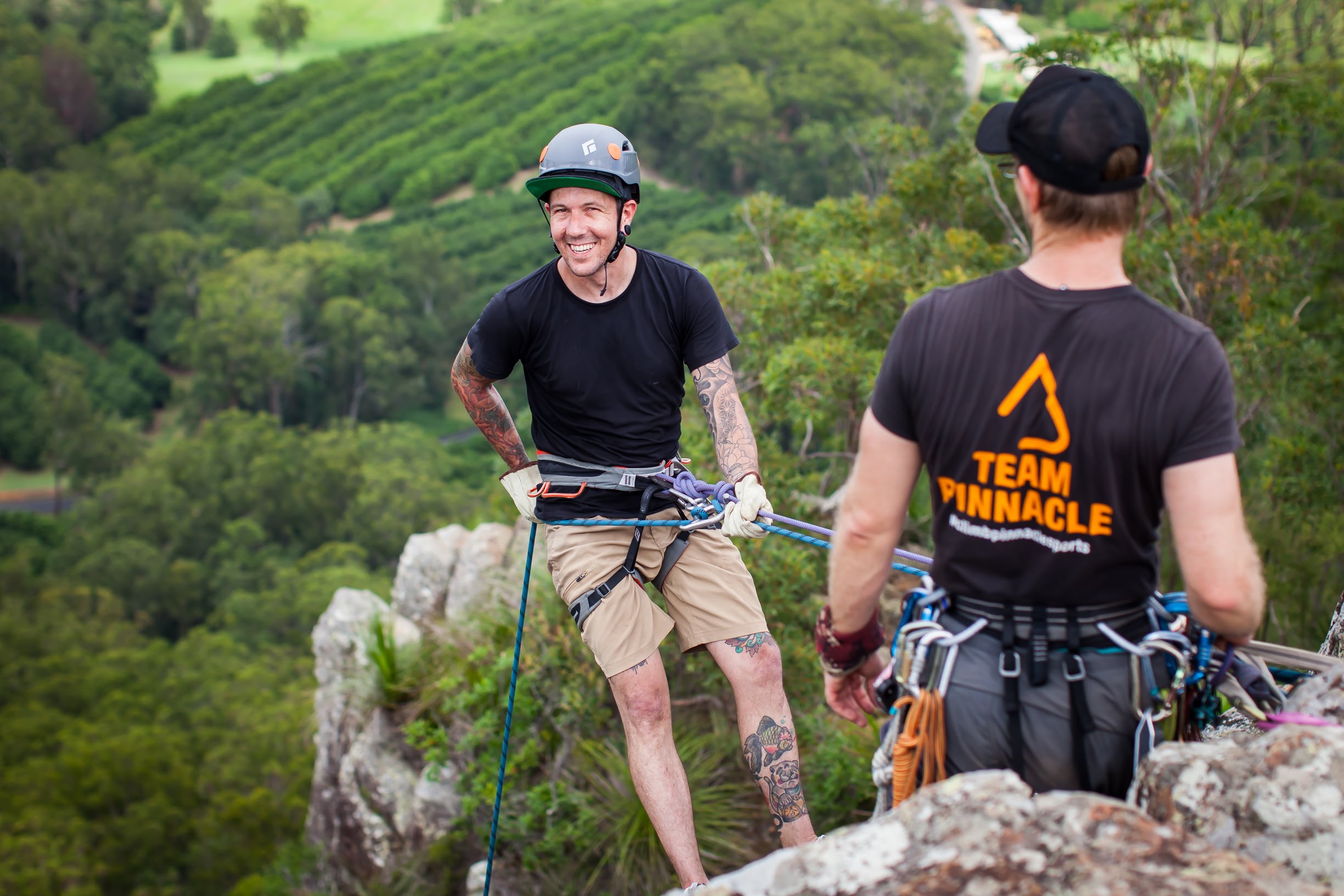

.jpg)




.jpg)




